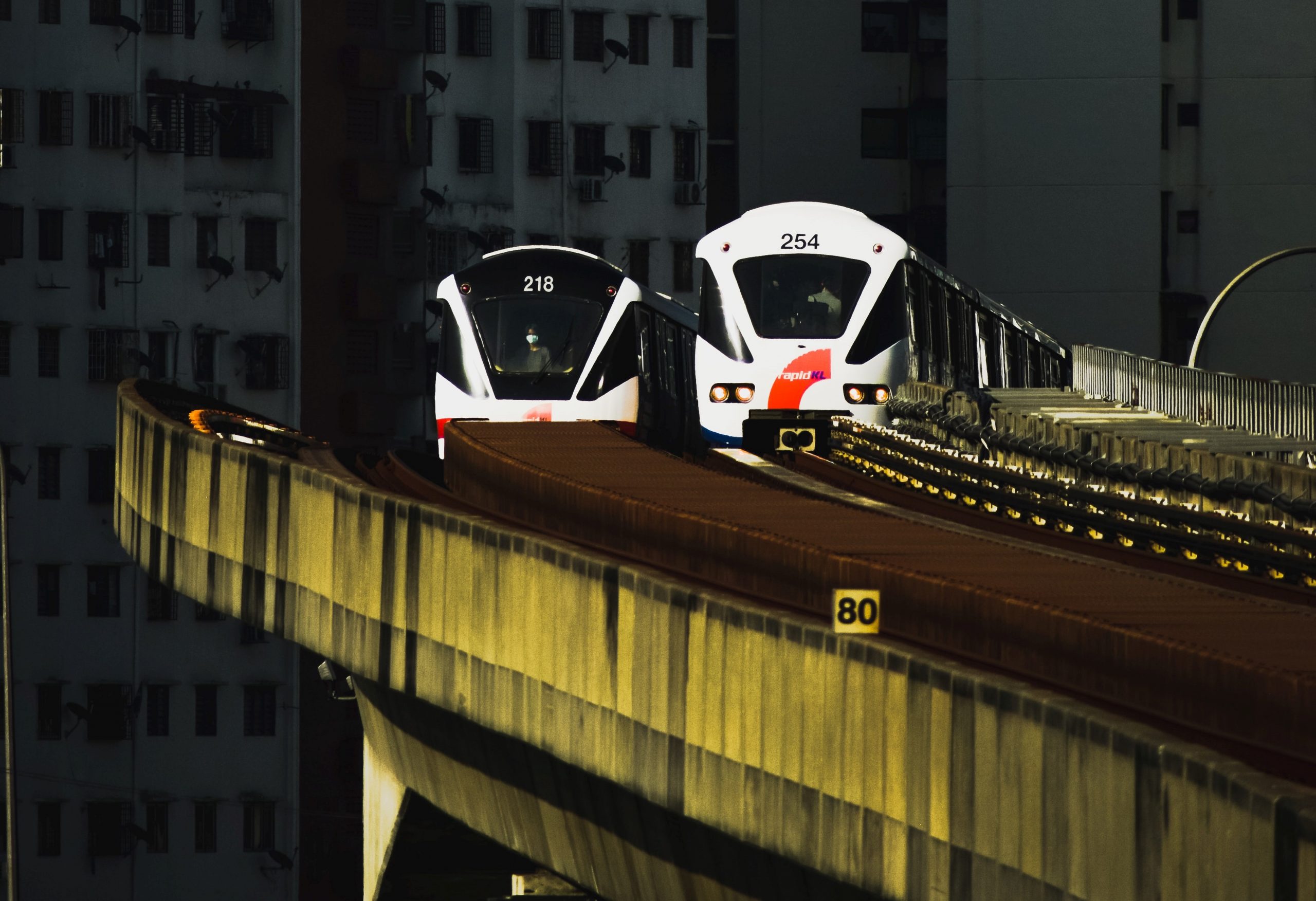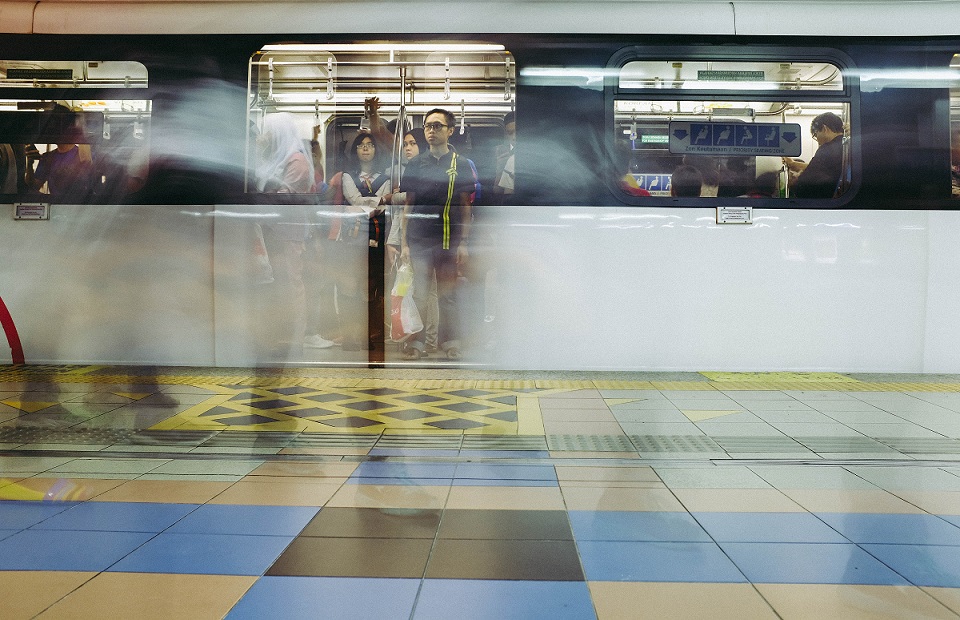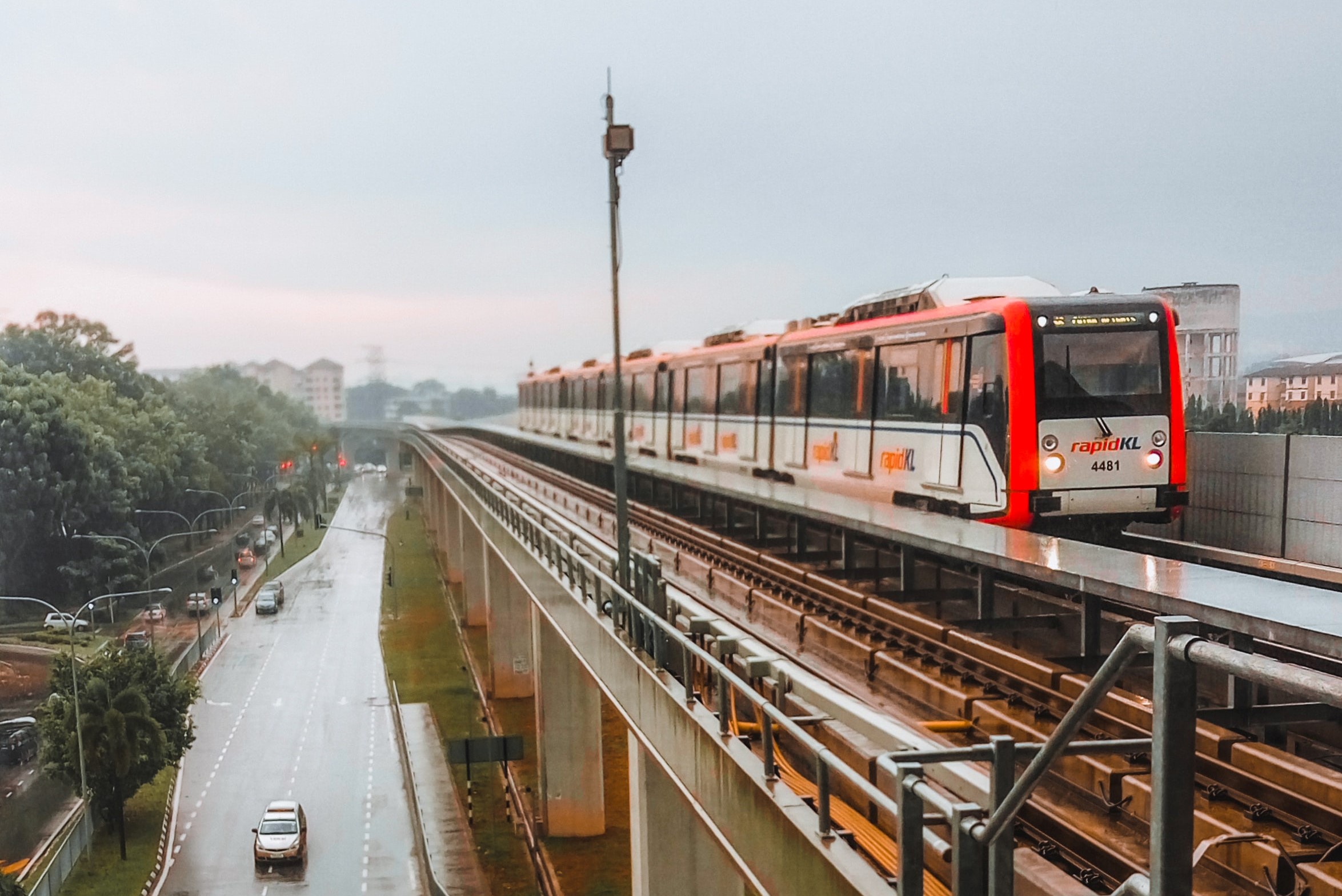Last night, two light rapid transit (LRT) trains on the Kelana Jaya Line in Kuala Lumpur collided underground near the KLCC LRT Station involving two trains, one of which was ferrying 213 passengers at the time. The 8.33pm incident, a first in over 20 years of operation in Malaysia, immediately saw social media platforms and the news flooded with photos and raw footages from inside the train. Read more to find out what happened and how, and the crisis management perspective of it all.

Subscribe to our Telegram channel to get a daily dose of business and lifestyle news from NHA – News Hub Asia!
KUALA LUMPUR, 25 May 2021 – Last night, two light rapid transit (LRT) trains on the Kelana Jaya Line from Gombak to Kuala Lumpur collided underground between Kampung Baru LRT Station and KLCC LRT Station involving trains TR40, which was empty, and TR81. The latter was ferrying 213 passengers at the time.
The 8.33pm incident immediately dominated headlines on social media platforms and the news with photos and raw footages from inside the train, followed by more coverage on the rescue and evacuation process by the emergency response team, which were made up of the Royal Malaysian Police (PDRM), Fire and Rescue Department of Malaysia (BOMBA), medical officers from Kuala Lumpur Hospital (HKL), and the Malaysia Civil Defence Force (APM or MCDF), who were all deployed within minutes of the incident. All passengers involved in the mishap were evacuated once the train doors were opened at approximately 8.48pm and were all screened at an emergency triage set up on-site to determine the severity of their injuries.
The passengers, medical state, and financial assistance
Public transport company, Prasarana Malaysia Berhad (Prasarana), confirmed in a statement this morning that out of 213 passengers involved in the collision, 64 passengers are currently being treated in Kuala Lumpur Hospital (HKL) with 43 people sustaining non-critical injuries, 15 in semi-critical condition, and six in critical condition with three on ventilator support.
On behalf of the Board of Directors and Prasarana workforce, Prasarana chairman, Datuk Seri Tajuddin Abdul Rahman, apologised to all Malaysians and passengers for the accident, expressing regret and sadness. Tajuddin announced three forms of financial assistance that would immediately be extended to the passengers affected:
“A special monetary assistance of RM1,000 will be given to all passengers. There will also be financial assistance to bear their medical costs, follow up treatment and others deemed appropriate with the injuries sustained.
“Those who lost their income due to this incident will also be aided with a cost-of-living assistance,” he added.
Cause of collision
Transport Minister Datuk Wee Ka Siong, in a press briefing held at the scene of the incident last night, announced that thorough investigations will commence immediately by a designated task force and with a preliminary report to be submitted within 24 hours (today) by the Land Transport Authority. Describing the incident as the first in the 23 years of LRT’s operations, Wee also said that the task force will submit another report in two weeks to identify the cause of the collision between the two trains that were travelling at 20 kph and another at 40 kph at the time of the incident. He added that the full report will tell whether the crash was due to miscommunication, signal or human error.
Tajuddin confirmed in a press briefing this morning that the cause of the accident is still unknown and is still being investigated by the authorities. Prasarana announced in a statement earlier today its commitment to work closely with the Investigating Committee headed by the Transport Ministry secretary-general, Datuk Isham Ishak, and other agencies under its purview, adding “We will also cooperate with the police investigating the incident under Section 201 of the Land Transport Act 2010.”
Many speculations surrounding the cause of the incident have appeared on social media including on the possibility of a cyber-attack or sabotage. Commenting on this, the police urged the public not to speculate and to give the task force some space for a comprehensive investigation.
Dang Wangi police chief Assistant Commissioner Mohamad Zainal Abdullah told reporters today, “Give the task force space to conduct a thorough investigation into the accident. During the investigation period, no one should make speculations, assumptions and views that can cause confusion and disrupt public order.”

How it happened
Preliminary findings from initial investigations conducted by the Land Public Transport Agency (APAD) were announced by Wee this evening, which indicated that the crash was caused by negligence of the hostler (train driver) who drove the empty train TR40 in the wrong direction.
Wee said, “It should have been moving south heading towards Dang Wangi station but moved north instead and caused the crash with TR81 that was carrying 213 passengers.”
Elaborating further, Wee said that TR40 at 8.21pm before the crash was operated by the automatic train operation (ATO) system and was moving southbound from Gombak to the Subang depot. However, the TR40 suffered a time-out and stopped when it neared the platform of Kampung Baru LRT station.
“Time-out occurred when the ATO failed after the vehicle on-board controller (VOBC) stopped. An order was issued for the hostler to drive it manually from Kampung Baru station to Dang Wangi station and it needed to move in the same direction to give way to a train from the south or in ATO mode to continue service.
“At the same time, TR81, which was operating in ATO mode, was in a static position at the KLCC station southbound platform; and at 8.24pm TR81 departed from KLCC station to Kampung Baru station after receiving information that TR40 had left Kampung Baru station heading for Dang Wangi station,” explained Wee.
The Transport Minister said that at 8.33pm, the hostler had contacted the operation control centre (OCC) informing that TR40 had crashed into a train identified as TR81, adding that at “around 8.36pm, the OCC informed the emergency action agency and appointed a duty officer at the incident area before the police and ambulance crew arrived at the incident scene to begin rescuing the victims.”
Wee reiterated that a special investigation committee chaired by the Transport Ministry secretary-general would conduct further investigation, from which a full investigation report would be submitted to the Transport Ministry in 14 days before being presented to the Cabinet.
Losses incurred and service resumption
With clean-up work and repairs to the track underway, losses incurred has yet to be calculated. Wee said, “If we follow the standard operating procedure, clean-up work and repairs will take only three days, and the total losses will be estimated later.”
Regarding the Kelana Jaya Line LRT service, Prasarana confirmed that the Kelana Jaya Line LRT service operated as usual since 6.00am this morning, using a single track and supported by a free shuttle bus service (during peak hours).
Elaborating further, Prasarana said, “With train frequencies every 10 minutes during peak hours and 30 minutes at other times, as well as capacity reductions to 50 per cent following the government’s announcement of stricter measures in the implementation of movement control order (MCO) 3.0, passengers are expected to wait a little longer than usual.
“To facilitate the movement of passengers during peak hours, five free double-decker shuttle buses, with a frequency of between 15 to 20 minutes, are also provided to take passengers to any station between Pasar Seni Station and Ampang Park Station.”
In the same statement, Prasarana confirmed that the Kelana Jaya Line LRT service is expected to be fully restored within three days, once all cleaning and rehabilitation works are completed, and that it has also taken proactive measures by carrying out sanitation works at the KLCC Station as well as in the surrounding areas to prevent the spread of Covid-19.

Crisis response and management
From a crisis management point of view, crisis management strategist and expert Nordin Abdullah said on Bernama TV’s Mid-Day Update that as part of crisis response in the early minutes of an incident such as this, “…effective crisis communications during this time will mean that authorities and the company involved need to give context and quickly put in place a crisis communications plan, which should be part of the overall crisis management plan.”
Nordin said this is especially so because people are “scrabbling for information” as all involved in managing the crisis in the early minutes including the company, the emergency response agencies, the government and related stakeholders are all playing catch up for a period of time.
Crisis communication at the start of this incident happen to start with what Nordin referred to as “citizen journalism” as passengers shared images and raw footages from within the train, which he said plays an important role for those managing the crisis. He pointed out, “Citizen journalists are important when it comes to reporting on a crisis, in this case the first footage came directly from the train; the reality of this is that there is no filters, it is raw and unedited so we get a first-hand account of the situation.”
Nordin went on to say, “Raw footage while it’s dramatic and there is plenty of blood and broken glass, we can see that the level of damage is quite limited compared to other train accidents; also when emergency response teams are on the way to the scene they will be able to start thinking about how to respond and equipment needed. For example, there were no visible fires so that informs the response… and the hospitals can start to prep for receiving those people in an appropriate manner.”
“The good thing about raw footage is that automatically becomes evidence and should be used in the investigation process. We can learn huge amounts by analysing the footage,” he added.
 Commenting on how well the crisis was managed during the incident, Nordin pointed out that from the early footage, the authorities took control of the area, which ensured that a second-level or a follow-on incident does not take place. He added, “We can see by the footage how well the police managed the scenario and allowed the BOMBA and ambulance to quickly get people out to hospital, and importantly they also communicated this to the press on the day.”
Commenting on how well the crisis was managed during the incident, Nordin pointed out that from the early footage, the authorities took control of the area, which ensured that a second-level or a follow-on incident does not take place. He added, “We can see by the footage how well the police managed the scenario and allowed the BOMBA and ambulance to quickly get people out to hospital, and importantly they also communicated this to the press on the day.”
“If we look at the organisation, this morning Prasarana held a press conference, and announced some additional details, they announced that they are going to give a special assistance to all who were on the train, and to those who are currently hospitalised they are getting additional financial assistance to pay for the medical bills,” he continued.
Nordin elaborated, “In terms of managing the impact of the crisis on citizens who use the LRT yesterday, the other part that was done very well yesterday was they also laid out steps for those who still need to get to work today when they announced and reminded everyone to use The Pulse App and where it can be downloaded, which was a smart move by the communications team to communicate during this time. It shows that they started to look at the broader context of the crisis, and not just the unfortunate people on the train.”
Nordin also commended the government for its rapid response towards this incident. “Full marks have to go to the minister in this case, Datuk Seri Dr Wee Ka Siong, of course he holds a PHD in transportation planning and is a qualified Civil Engineer; the minister did a few things right at the right time – one thing that people want in the wake of an accident like this is answers, and a timeline for those answers. The minister stated that a preliminary report will be prepared within 24 hours and a special task force has been set up to investigate and a full report to be ready within two weeks. This is an example of getting communications and investigations right at the same time.”
“But when we look at social media, which we are monitoring very closely at the moment, we see a lot of discussion around possible cyber-attack or sabotage; of course, the authorities cannot comment on that and investigations need to be done. But I think this can be the example where the minister will have to bring together a broad-based investigation team from different agencies to make sure that all angles are covered,” he added.
Nordin concluded, “What I’m seeing is how Malaysians come together in a crisis. This is the one thing, when I always talk about crisis responses, I always talk about community response; and the things we saw in the early footage is that people are helping each other, that they were helping those who hurt a lot more, and we saw it did not matter who and whether with males and females and what race people belong to. It was a community response and whenever you see a community response you will see a much better outcome in terms of crisis management.”
*Reported by Ruzanna M. Zuknik, News Hub Asia.
